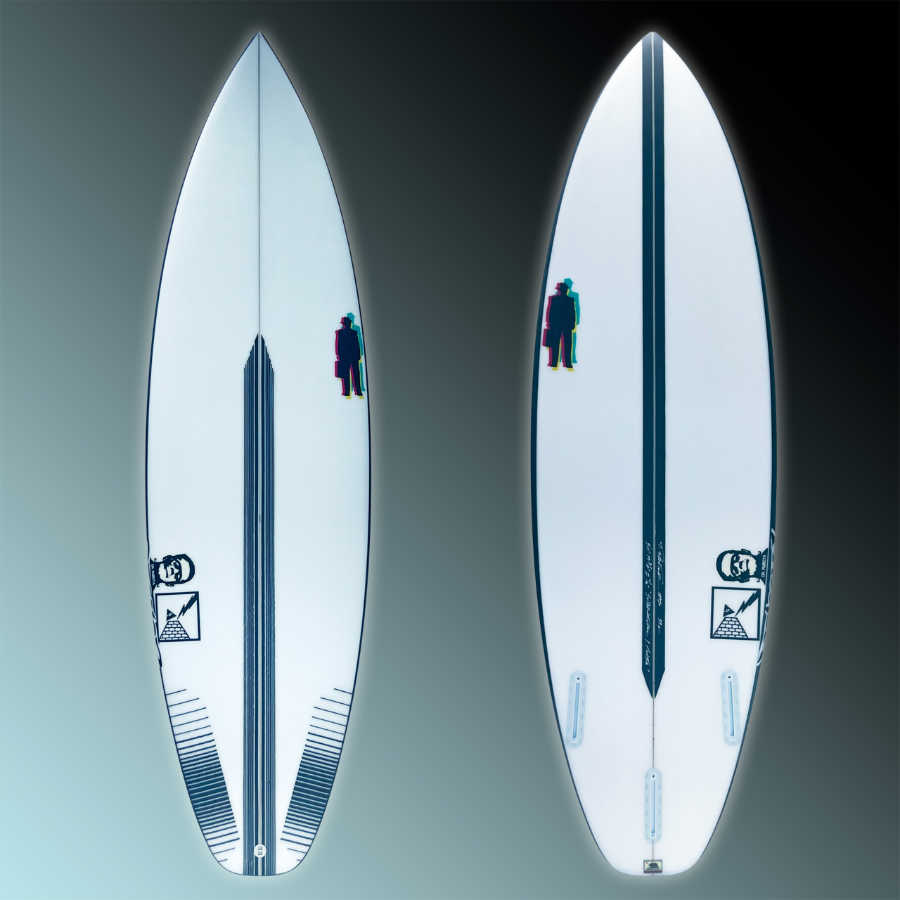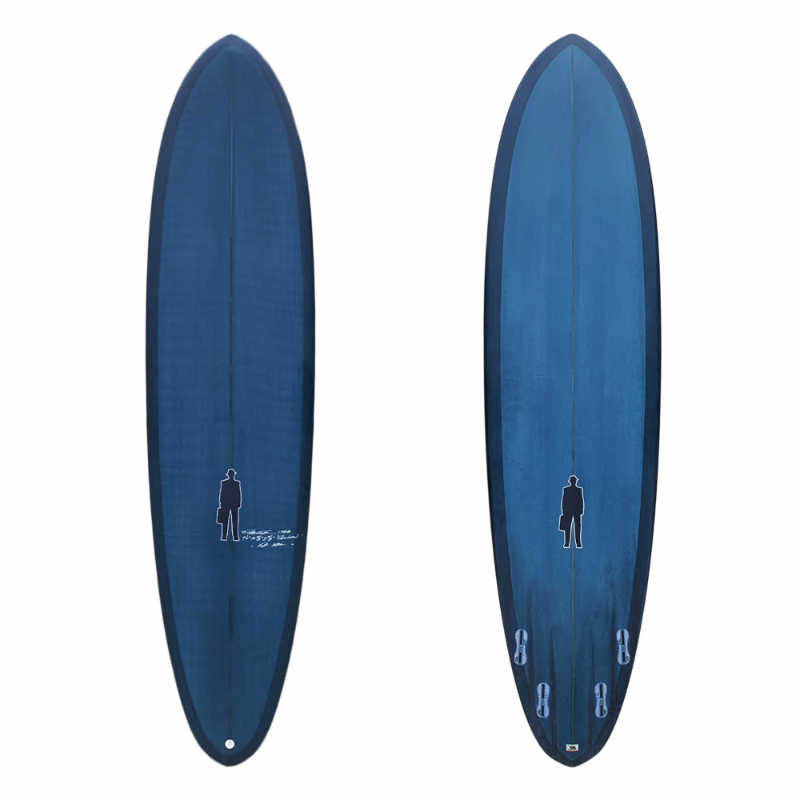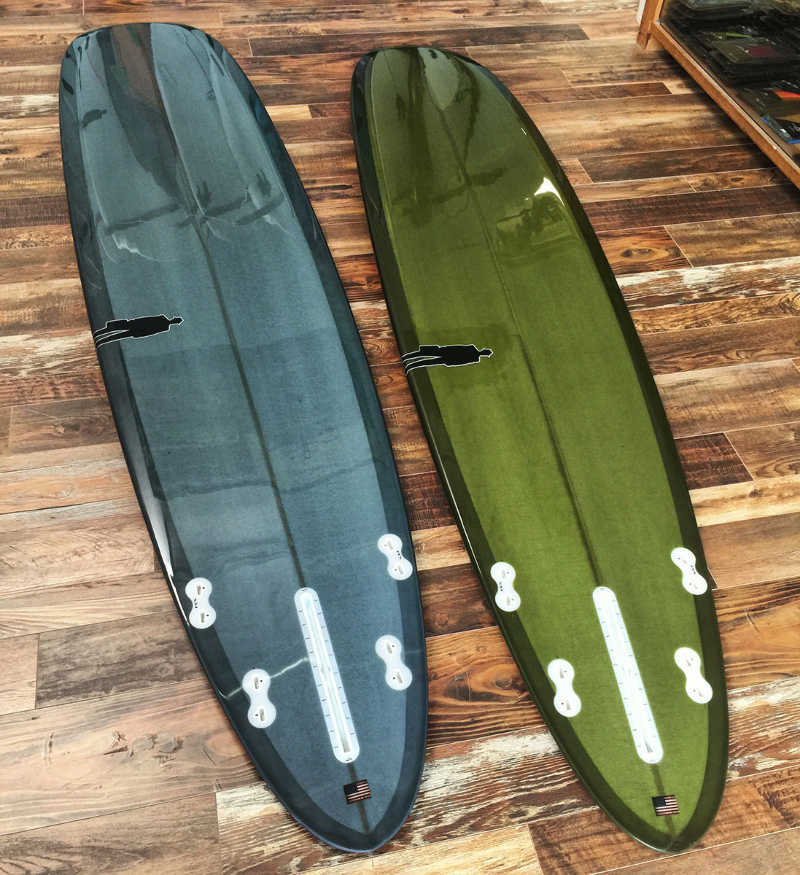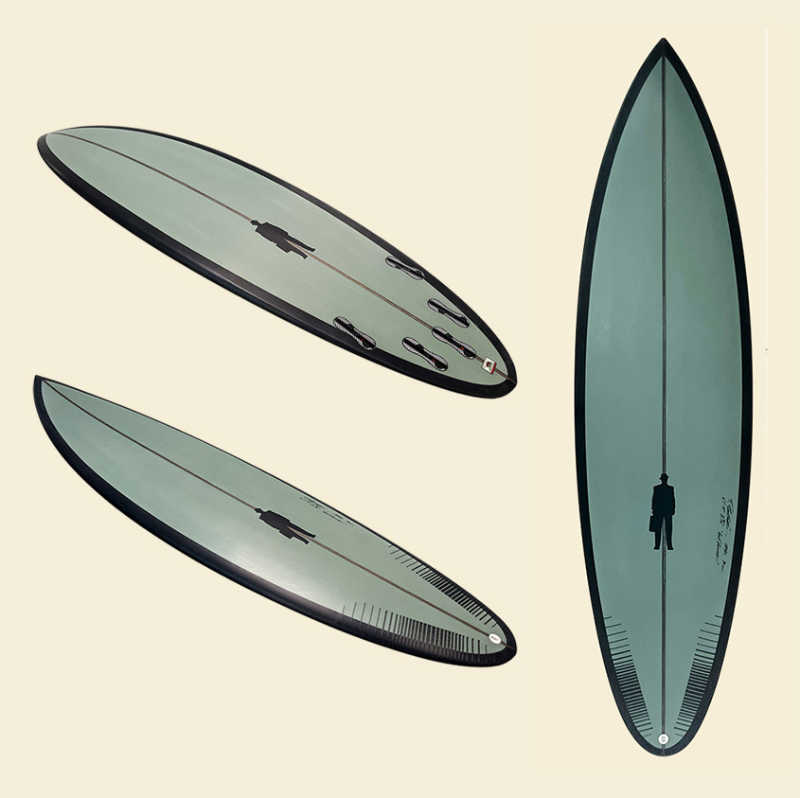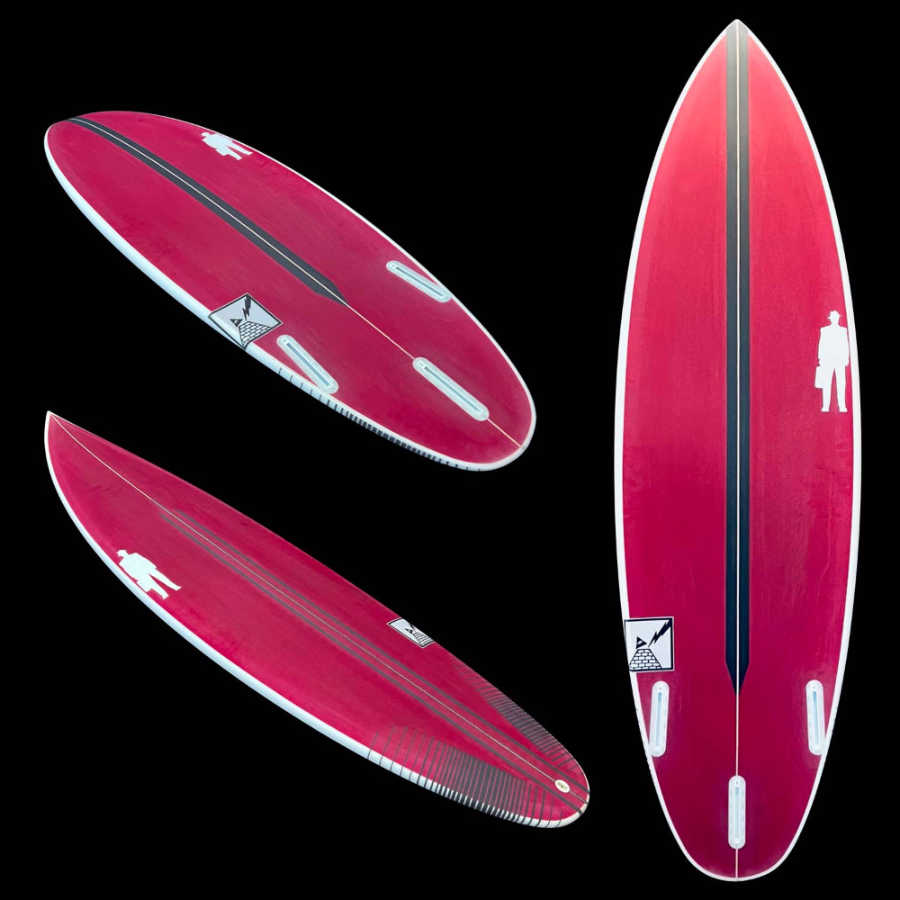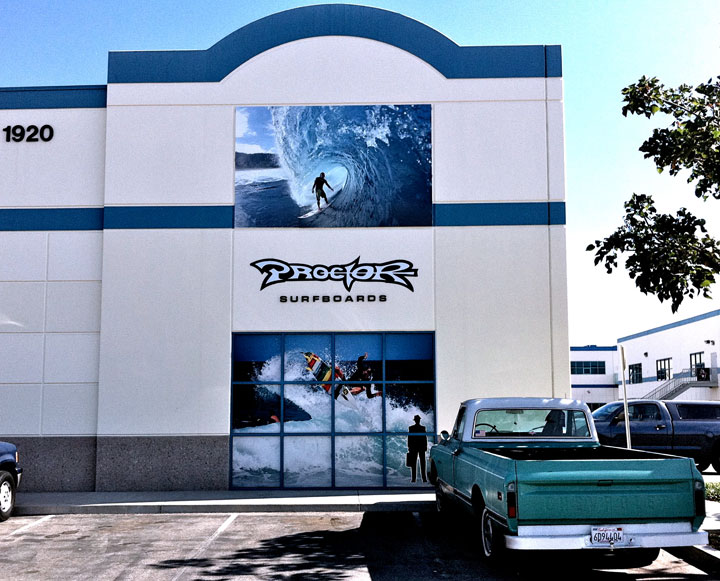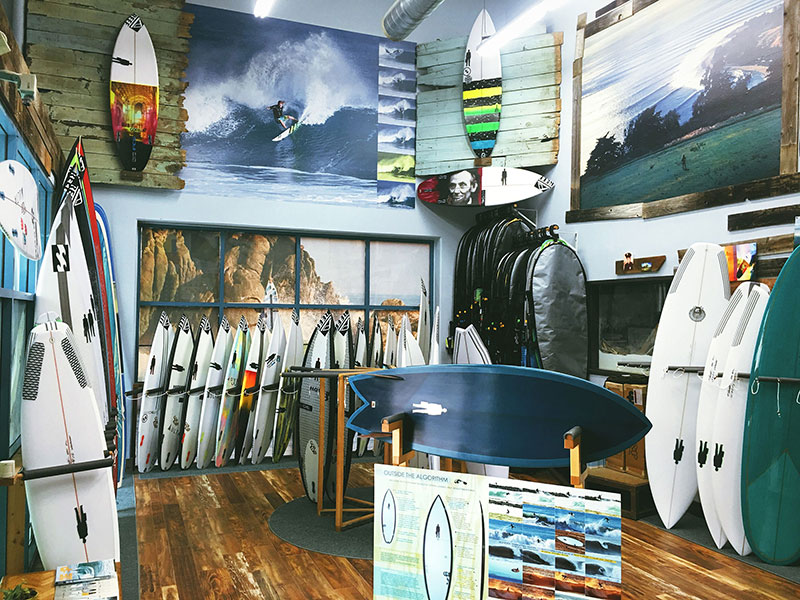Five fin convertible set-ups....when to ride thruster? When to ride quad?
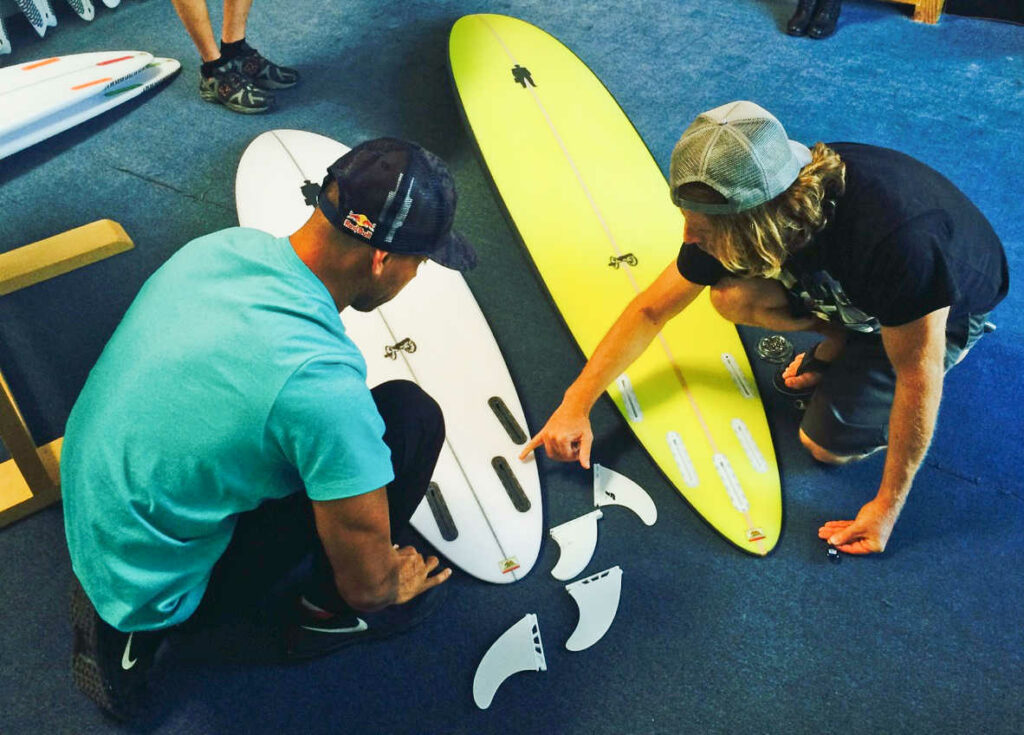
Quick Tip on 5 fin installs: Forward side fins from thruster set always remain in place
You will change out only the trailer (back center) fin from your thruster set in exchange for the (2) quad rears when you want to ride your board as a quad instead of thruster. See photos below.
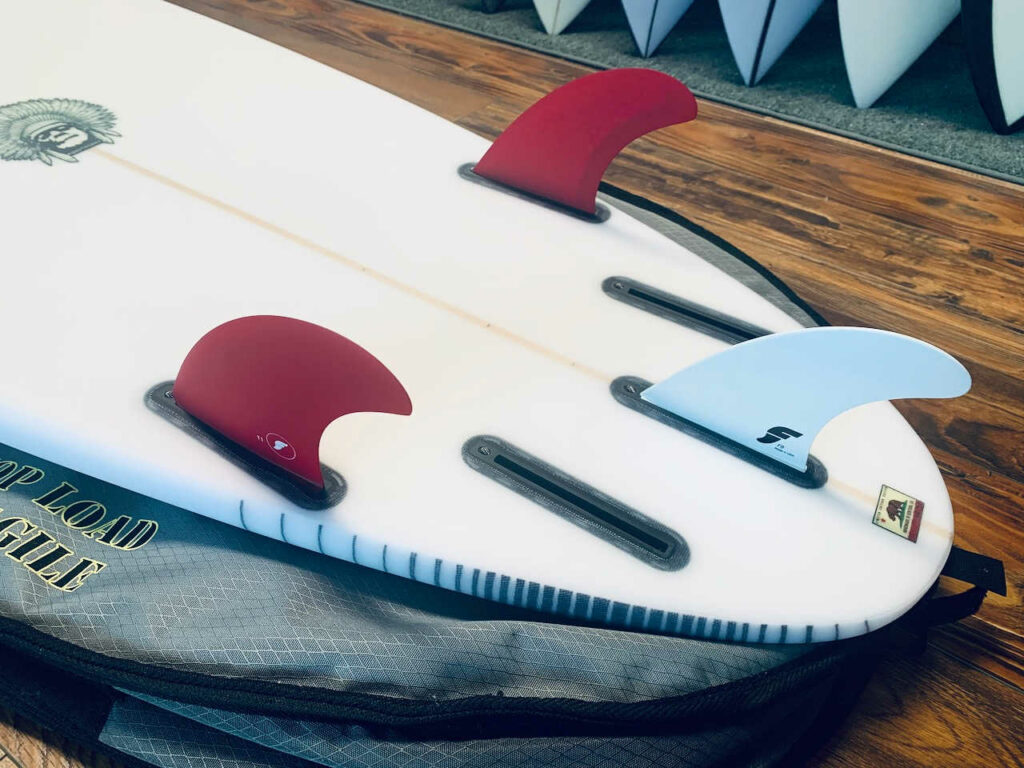
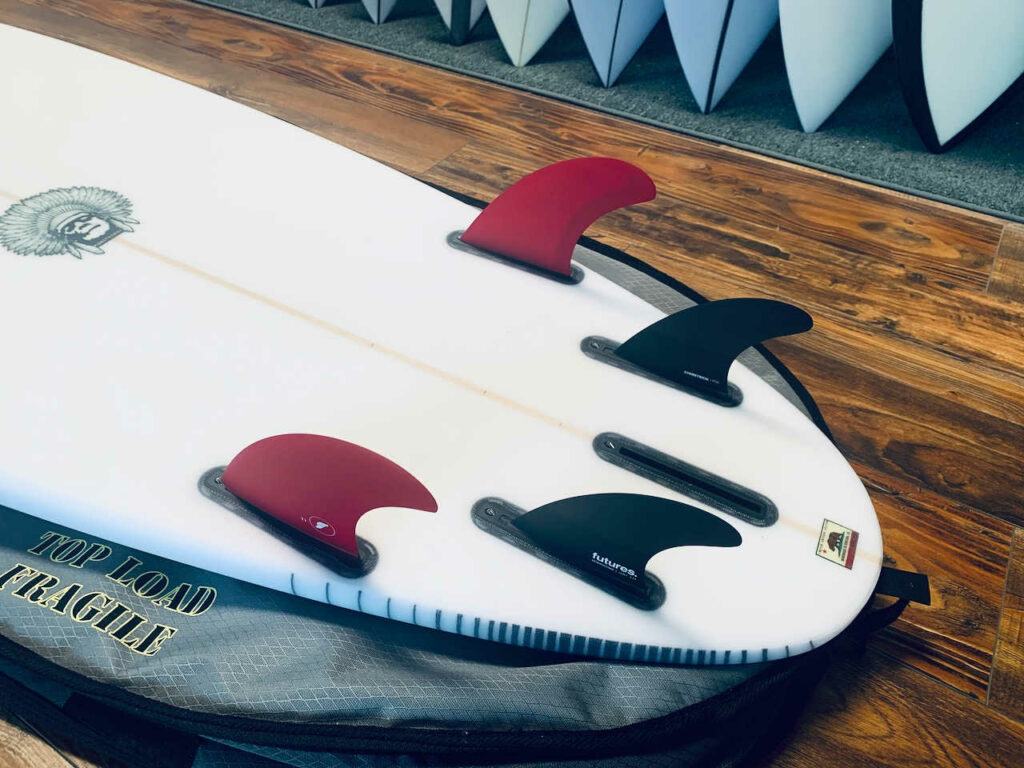
THRUSTER SETUP
When trying out a new board with the five fin convertible option, I almost always find that it is best to run first with a tri-fin set-up.
Thrusters are the most predictable and stable fin configuration, and the best way to get to know the ‘personality’ of a new board. It’s like having tight suspension on a car, it makes for an easier way to keep the reigns on the wheel while feeling out the gas.
Thrusters are great at cornering tight turns under high pressure, at high speeds and with power.
After all when we go back to the roots of the tri-fin, it came from the brainstorms of Australian surfer Simon Anderson; a physically larger than average pro during his time that needed more traction and ‘thrust’ to gain an edge against his competitors… who were primarily riding the standard of that era; the looser MR style twin fins. Simon needed tighter suspension for his bulkier frame. Well, it’s in the history books now, but Simon achieved just what he was after and was able to throttle and thrust his large frame into powerful speed-raking lead foot turns that the surfing world up to that time had never before seen.
So, what does a tri-fin do that a quad can’t?
And, what are the best conditions for a tri?
Ok, this is where it gets fun; the thruster loves to be surfed top-to-bottm; the vertical approach where you come off the bottom quick and tight, redirect straight up into the lip, and finish off with a snappy fast reacting tight radius turn or fin release. The tight radius pivot and speedy redirection of the thruster is quite possibly it’s greatest advantages in waves that require a more vertical up and down, side-to-side approach.
Quad vs Thruster Beginner. Which is better?
Due to the stability of the thruster setup, beginners will benefit from starting on a tri fin (3) or if riding a longboard, the 2+1 fin setup.
Once a beginner surfer feels comfortable and competent catching and riding waves, switching to a quad fin can offer added speed down the line. This added speed helps to connect through sections in mushy surf offering longer rides. The quad fin setup offers increased leverage on the rail when going into turns. The quads will also create a wider turning radius with added momentum through the second half of turns.
So with a quad fin setup you go into more committed wider arcing turns. With a thruster setup you can get more pivoty in the pocket or do fin releases and fins free maneuvers. The center drag on the thruster with the trailer fin will also add that stability that help to get to know your board.
THRUSTER FIN SETUPS
QUAD SETUP
Whereas the quad brings out the fastest top speeds possible in the more lateral pedal to the metal runs where you are going full gas on the straightaways.
So, why is the quad so much faster on these straightaways?
To answer that let’s take a quick walk through the basic hydrodynamics of reducing drag and increasing fin area for drive. The back center fin on a thruster creates drag. Drag is not necessarily always a bad thing….there is actually good drag, and there is bad drag. For example, on a thruster, the center fin creates positive drag when it is being pushed hard and cornered through a turn where the wave has the push that is called for to lay the board over hard on rail. The ‘drag’ in this case keeps the board from sliding out as well as creating thrust through the second part of the turn or maneuver.
While on the other hand, ‘negative’ drag can been seen on the thruster when the wave has a long trim area on it, or an area where you need to cover a lot of territory, but not necessarily by being hard on rail to get from point A to point B. Think, for instance, of a pointbreak that has long flat crumbly sections that you are trying to get through and skate across, but you feel like you are dragging something in your tail.…like there is more friction in the back half of your board than glide and you can’t quite get across the dead spots to connect the dots. This is one of the scenarios where removing the center back fin increases speed by reducing the negative drag…..the same rules apply where you have long running lateral barrels that require top straightaway speed….and so, we introduce part of the non-center fin picture that is the quad.
Ok, so quads go faster on the straights, in part, by having no center back fin; got it. So what exactly do the rear quad fins do then?
By increasing overall fin area on your rail, you also increase the leverage against the water when you set your rail into a turn.
Because quads don’t just go straight, they turn too….just a bit differently than thrusters do. And what is so rad about having almost double the fin area closer to your rail is that when you do sink that rail down, you get an increased lateral drive that has more horsepower than you can get from one fin on your rail.
Basic math – more area = more leverage = more drive.
Now, with the more drive you get from the quad side fins, you also get a unique turning radius. It’s not possible to pivot around two fins the same way you can pivot around one. So, the trade-off with the quad is that they turn on a bit wider of a radius….which isn’t necessarily a negative; especially if you are surfing a more lateral wave, then you don’t really want something that corners super tight, you want want something that holds it’s speed through drawn out arcs.
Something I’ve personally noticed that is really cool about how quads turn is at pointbreaks, especially when it’s big and sectiony. You can get so much speed down the line to clear those whitewater mounds that normally get in the way and cause hiccups, but when you get to a part way out on the shoulder and want to draw a long arcing cutback that holds speed; the quad loves it. Once you get that rail laid over and both the fins on the rail engaged, you are able to increase your speed through the second half of the arc….the part where you normally on a thruster have to kind of like milk the gas pedal ease on and off the rail almost so you can keep your speed up….well, the quad fins just give you that little extra area of fins that push back and keep giving you more gas, so you come out of these big lateral arcs with more speed than you had going into them.
So, the long and short of it….THRUSTERS are grippy, like up and down quick side to side back and forth surfing conditions snappy in the pocket, fast redirection, pivotty and tight off the bottom…. and …. the QUADS are lateral speedsters; they give you a lot of added speed down the line to help you get through sections. Quads will draw turns out a bit, but hold and even gain speed through the second half of long, drawn out rail turns.
QUAD FIN SETUPS
Quad Fin Longboard or Quad Fin Midlength
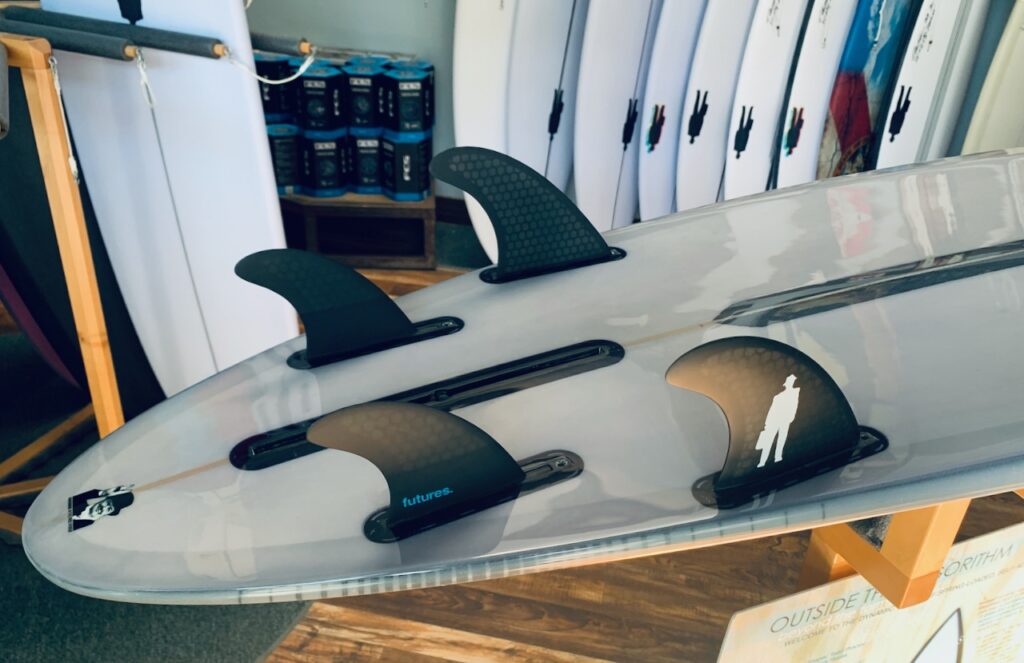
Quad Setup - looser, but extremely popular and increasingly the setup of choice for many surfers. Larger side fins from your favorite thruster set in forward side positions with quad rears in rear positions. No center longboard fin.
2+1 Tri fin longboard setup - As an elaboration on a single fin, a 2 + 1 retains the smooth feel, but with added drive and hold. For reference on positioning, you will always put the sidebites in the forward side positions with your longboard fin in the center longboard box.
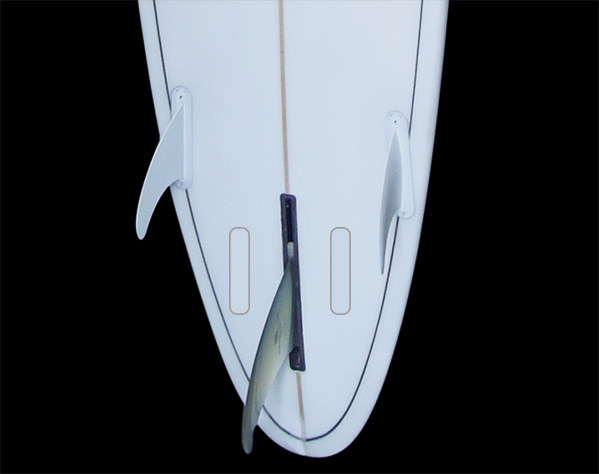
Shop Surfboards with Quad + Thruster 5-Fin Install
Surfboard Reviews on Quad Fin Longboard
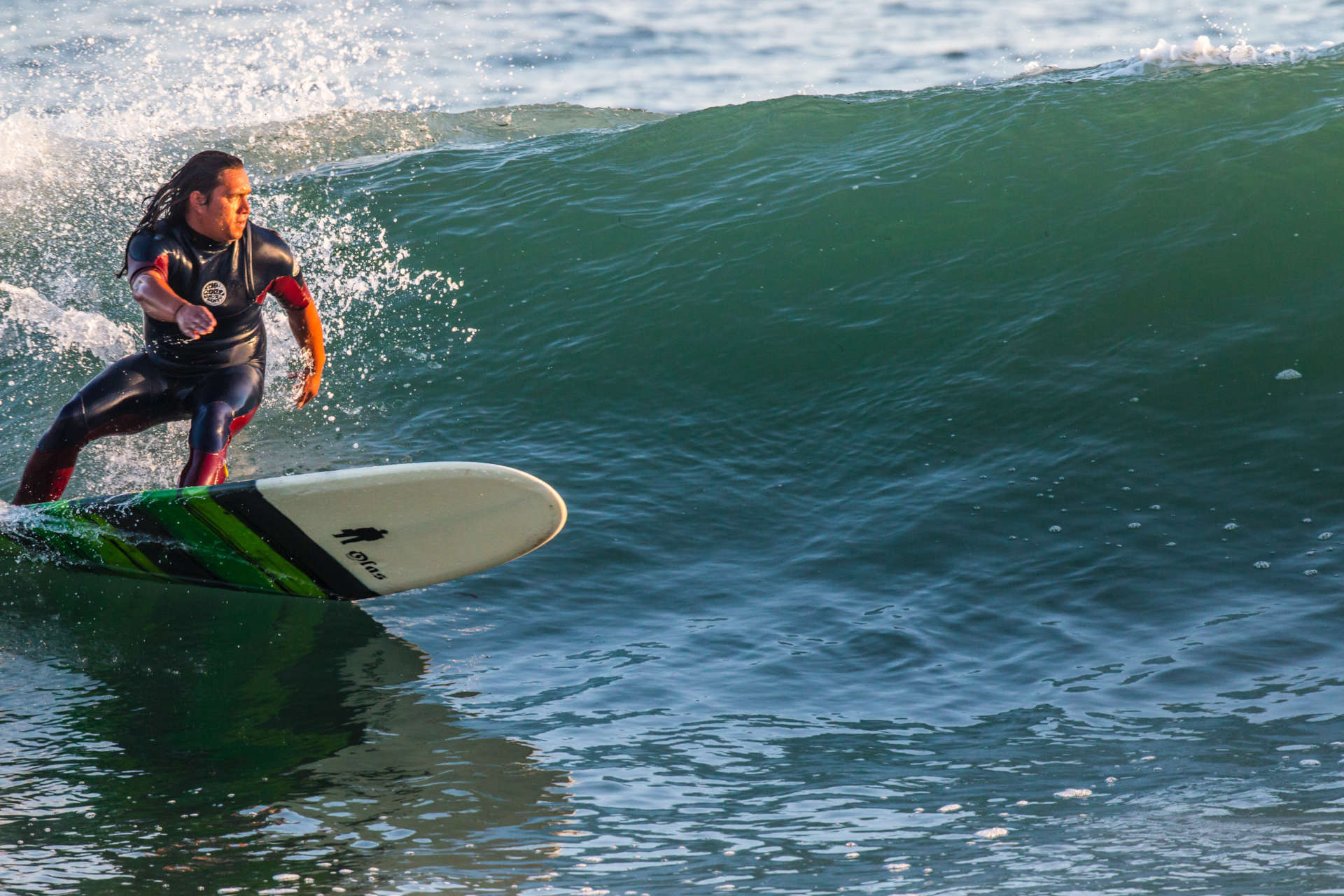
“IT’S MY FAVORITE LONGBOARD I’VE EVER HAD….
when I lay it on rail it just accelerates through the turns & it noserides insane.” Larry Ugale, Ventura, CA 9’0″ Performance Longboard



